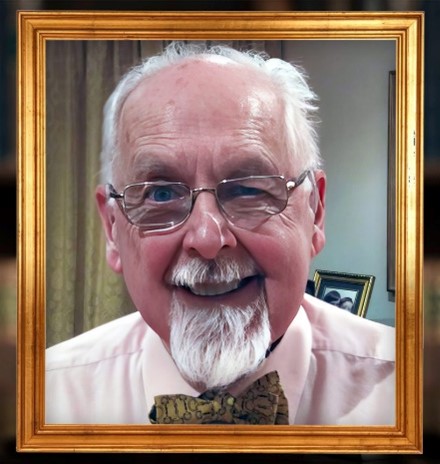Memories of a Mentor
AB Wilkinson (Sandy Wilkinson), as remembered by Kenneth Norrie
By Kenneth Norrie - Posted on 14 February 2023

Bonar House, Bell Street, Dundee
In Dundee, on a wet and blustery day in October 1977, an 18-year-old boy somewhat anxiously made his way to Bonar House, in Bell Street, which at that time housed the Law Faculty of Dundee University. It was his first day as an undergraduate student studying for an LLB, and he had no notion of what university life would be like. The information package I (for it was me) was clutching that morning, with “Professor X”, “Doctor Y” and “Ms Z” seemed in its nomenclature to herald a terribly alien place. I was bemused by the difference between a lecturer and a professor – and how the doctors fitted into the hierarchy was well beyond my ken. I was not from a university-attending background.
In those days, 40-odd years ago, universities offered little in the way of “Induction” or “Welcome and Development” weeks, but the new Law Students at Dundee (and we always gave ourselves capitals) did get a series of lectures by some of the academic staff on our first day. Most of them were disconcertingly young, and rather more informal than I was comfortable with until, mid-afternoon, the Professor of Private Law walked onto the stage. Tall, tweeded, bow-tied with a goatee, Professor A.B. Wilkinson moved with an unforced dignity, his black gown billowing behind him, as if a galleon in full sail making its stately way to port (or in his case, to the lectern).
Here was the gravitas and confidence that I had imagined a law professor (which sounded an impossibly grand thing to be) would possess – though in the event his wearing a gown to lecture was even then understood to be a dying habit. But was he going to be scary (like the Professor of Public Law, Terence Daintith, who had terrified us all that morning), superior, incomprehensible (ditto)? Then he smiled, puckishly, and we knew that all would be well. At the end of his lecture, Professor Wilkinson received the only spontaneous applause of the day, and I was forever smitten with Scottish Private Law.

A.B. Wilkinson, KC, co-author of Wilkinson and Norrie, The Law Relating to Parent and Child in Scotland
Sandy Wilkinson had taken up the Chair in Private Law at Dundee around five years earlier, having made the unusual move from the bench (he had been Sheriff at Stirling) to the academy. At Dundee he taught us both Delict and the Law of Evidence (subsequently turning his lectures into a book for Butterworths, published as The Scottish Law of Evidence in 1986).
Complex areas of law were much illuminated for his students by a droll turn of phrase which seemed always to capture precisely and revealingly the essence of whatever point he was making. Once, he was describing the facts in Sayers v Harlow UDC [1958] 1 WLR 623 in which a woman sought to escape danger but caused herself more harm: she was climbing out of a public toilet in which she had become trapped used the toilet roll holder as a foothold. Even after all these years I remember Professor Wilkinson’s precise words: “Consistent with the function for which it was designed, the toilet roll holder – rolled. In his judgment, the Master of the Rolls …..” His endearing giggle was drowned out by the students’ raucous response.
In all his classes his depth of knowledge and understanding was palpable, but he was too modest to boast, and too kind ever to let any student feel they didn’t or couldn’t understand.
While sheriff at Stirling, Sheriff Wilkinson had delivered a number of judgments, unusually erudite for the sheriff court, which illustrated his understated mastery of our long legal traditions and its literature. Wilson v Fleming 1970 SLT (Sh Ct) 49, for example, explores the common law responsibilities to keep cattle from wandering, and his judgment cites Stair, Rankine, and cases from Morison. Highland Dancing Board v Alloa Printing Co Ltd 1971 SLT (Sh Ct) 50 decided the nice (and until then unclear) point that an unincorporated association could sue for defamation – and was itself cited in the Court of Appeal stage of Derbyshire CC v Times Newspapers [1992] QB 770. One of his evidence judgments, Buick v Jaglar 1973 SLT (Sh Ct) 6 was subsequently cited in a Court of Five Judges: Mullan v Anderson 1993 SLT 835. Some years later, after his return to the shrieval bench, he penned the first instance decision in Wallis v Wallis, a case involving the then fairly new Family Law (Scotland) Act 1985 which asked how the section 9 principles were to be applied to matrimonial property that was jointly owned. His decision on that important point was actually overruled by the Inner House, before being restored by the House of Lords, which overruled the Inner House: 1993 SC(HL) 49.
Sandy Wilkinson was the Head of the Department of Private Law all the time I was a student at Dundee, and he was a serious academic. As well as his book on Evidence, he contributed to the Stair Memorial Encyclopaedia of the Law of Scotland, edited Gloag and Henderson’s Law of Scotland and also Macphail’s Sheriff Court Practice.
Of more personal importance to me, he was also the Dean of the Faculty of Law when I commenced my PhD studies after completing my LLB and DLP. I applied for a one-year lectureship in law at Dundee (to provide me with an income and exempt me from post-graduate fees) and was interviewed for the post by the University’s then Principal, the redoubtable Adam Neville, the Professor of Accountancy (one Professor Grinyer) and the Dean of Law. After the interview, they put me in a side room which was not sound proofed, and I could hear quite distinctly Professor Grinyer saying, somewhat grumpily, “but he’s only 23!”, followed by Sandy’s emollient tones (though what he said I never made out).
I got the job, and thereafter benefited from Sandy’s wise counsel as I took the first steps in what would be my whole professional career. He also became my PhD supervisor, replacing the man who had persuaded me (I was easily led) that a PhD was necessary for good existence (Stathis Banakas, now at UEA, an outsized presence – as loudly Orthodox as Sandy was quietly Episcopalian).
After my apprenticeship at Dundee I moved to Aberdeen, acquired new supervisors (though oddly enough Sandy eventually acted as one of the two external examiners of my thesis). In 1986 Sandy became a sheriff once more and, after a short spell at Falkirk, he moved to Glasgow Sheriff Court. Our paths became intertwined again around 1989, when Professor W.W. McBryde, author of The Law of Contract in Scotland and then Director of the Scottish Universities Law Institute (a role now held by our own Professor Barry Rodger) asked me to step in and assist Sandy to bring to completion the major SULI textbook, Parent and Child, that he had been working on for some years. (One of my prized possessions is a flyer I found in an old Scots Law Times from 1968: “Coming Soon!” it proclaimed. “AB Wilkinson on Parent and Child”. The book eventually appeared 25 years after that printed promise). Sandy’s return to the bench had reduced very substantially the time he could devote to legal writing, and Bill McBryde suggested me as a potential collaborator. Initially, Sandy was understandably reluctant to have someone else tampering with his words (as I would be, in spades), but he quickly and with characteristic grace welcomed me to the task.
The existing text he presented me with was extensive, but incomplete and sometimes out of date. He had written, for example, two long chapters about adoption law, but had done so before the consolidating Adoption (Scotland) Act 1978. His exposition of the Hague Child Abduction Convention had been written before there was much in the way of case law on what rapidly thereafter became a topic heavily dominated by court judgments. Other chapters, mostly of an historical nature, we would be able to use without much alteration (and they appear in the first edition of Parent and Child).
All his material was typed onto foolscap pages – with a typewriter, for those who remember such machines – and my initial task was to retype the whole into “Word Perfect”, the processing package that Strathclyde, to where I had since transferred, then preferred. The five-inch Floppy Discs could take around three chapters per disk, and they sat on my shelf until as late as January 2023 when Frances Murray finally persuaded me to bin them (decades after I had last seen a machine that could even read these discs).
For the next three years, I would regularly visit Sandy in his Chambers at Glasgow Sheriff Court to discuss the chapters as I updated and, in some cases, wrote or rewrote them. Wholly new chapters were required in response, for example, to the Human Fertilisation and Embryology Act 1990, the Age of Legal Capacity (Scotland) Act 1991 and the Child Support Act 1991. Yet even with these I tried very hard to emulate Sandy’s writing style, which was elegant, authoritative – even magisterial – and a model of clarity. These are the exact qualities any good SULI text needs to possess.
We were both rather pleased with the result, and the book was finally published in 1993, the same year Sandy became QC. This was the last book I was involved in with which the publishers produced galley proofs as well as page proofs (though it did not prevent the page-setters making a good few printer’s errors). SULI, the publishers, organised a book launch in the Royal Faculty of Procurators in Glasgow, and Lord Clyde (whose Report of the Inquiry into the Removal of Children from Orkney had just been published) gave the address.
Sandy acted as consultant for the second edition of Parent and Child, which appeared in 1999, providing invaluable feedback on some of the newer chapters. Unlike with the first edition, I had full control of the layout, which allowed me to go against some of his structural advice. Sandy did not conceptualise adoption as a matter of establishing a parent-child relationship (as I simplistically did) but the practitioner/sheriff in him saw adoption rather as the end-game in the child protection process. His view was reflected in the first edition, where the adoption chapters appear with the other child protection chapters; my approach was reflected in the second edition, where these chapters were moved to the part on “Establishing the Relationship”. Over a decade later, for the third edition, when I was older and (I hope) wiser, I reverted back to Sandy’s original structure. I ought to have listened to him in the first place.
Though Sandy was not involved at all in the third (and final) edition of Parent and Child, I kept his name in the title, as a mark both of gratitude and of respect, and to acknowledge his continuing influence on the book’s tone and style. He taught me how to be a lawyer, an academic and, above all, how to be a writer. I am forever in his debt.
Sandy Wilkinson died, aged 90, on 17th January 2023 survived by his wife of 58 years, Wendy, and their two children.